Planning a trip to Vietnam’s ancient jewel? Discovering the best time to visit Hoi An requires balancing perfect weather, cultural festivals, and crowd levels. This comprehensive seasonal guide reveals when to experience Hoi An’s lantern-lit magic, countryside beauty, and ancient charm at its finest. From avoiding monsoon floods to catching the monthly Full Moon Festival, our experts at Hoianscootersrental.com have compiled local insights to help you experience this UNESCO town in its most captivating seasons – whether you’re seeking photography opportunities, budget-friendly periods, or the perfect balance of sunshine and authentic culture.
Introduction: Why Timing Matters in Hoi An
With its honey-colored ancient buildings, lantern-lit streets, and surrounding emerald rice fields, Hoi An captivates visitors year-round. This UNESCO-protected town on Vietnam’s central coast offers a blend of cultural richness and natural beauty that changes dramatically with the seasons. Choosing the best time to visit Hoi An can transform a good trip into an unforgettable journey, revealing the town’s different personalities across its distinct wet and dry seasons.
As Hoi An grows increasingly popular on the international travel circuit, finding that sweet spot—when the weather is favorable, cultural events are in full swing, and crowds are manageable—becomes ever more valuable. This comprehensive guide breaks down Hoi An’s climate patterns, cultural calendar, and tourism flows to help you determine the ideal month for your visit based on your preferences and priorities.
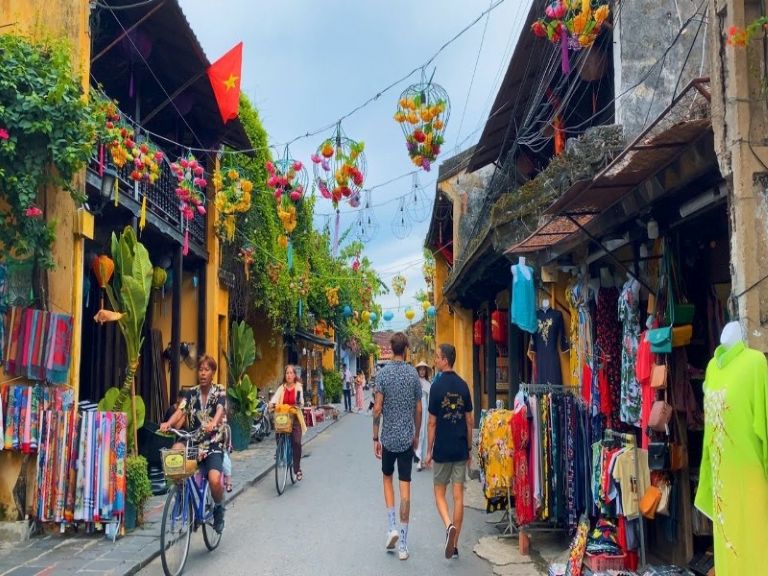
Climate & Seasons: Month-by-Month Breakdown
Hoi An experiences a tropical monsoon climate with two distinct seasons: the dry season (February to August) and the wet season (September to January). Here’s what to expect throughout the year:
Dry Season (February-August)
February-April (Early Dry Season)
- Temperature: 22-30°C (72-86°F)
- Rainfall: Minimal (occasional light showers)
- Humidity: Moderate (65-75%)
- Overview: Often considered the sweet spot for visiting Hoi An. Comfortable temperatures, clear skies, and relatively low humidity create perfect conditions for exploring the Ancient Town and cycling through rice fields.
May-July (Mid Dry Season)
- Temperature: 25-35°C (77-95°F)
- Rainfall: Very low
- Humidity: Increasing (70-85%)
- Overview: Heat intensifies, with July typically being the hottest month. Mornings and evenings remain pleasant, while midday heat calls for siestas or beach time at nearby An Bang or Cua Dai.
August (Transition Month)
- Temperature: 26-34°C (79-93°F)
- Rainfall: Increasing (occasional afternoon downpours)
- Humidity: High (80-90%)
- Overview: The last month of the dry season brings increasing humidity and occasional thunderstorms, typically in the afternoons. Morning activities are recommended.
Wet Season (September-January)
September-November (Peak Wet Season)
- Temperature: 22-31°C (72-88°F)
- Rainfall: Heavy (frequent prolonged downpours)
- Humidity: Very high (85-95%)
- Overview: The wettest months, with October typically receiving the most rainfall. Typhoon risk is highest during this period, and flooding in the Ancient Town is possible, particularly in October and November.

December-January (Late Wet Season)
- Temperature: 19-25°C (66-77°F)
- Rainfall: Decreasing (occasional showers)
- Humidity: Moderating (75-85%)
- Overview: Cooler temperatures and decreasing rainfall mark these winter months. December still sees significant rain, while January transitions toward the dry season with improving conditions.
Cultural Calendar: Festivals & Events
Timing your visit to coincide with Hoi An’s rich cultural events can add another dimension to your experience:
Major Annual Festivals
Tet (Vietnamese New Year)
- When: Late January or early February (varies by lunar calendar)
- Experience: Elaborate decorations, special foods, family gatherings, and a joyous atmosphere throughout town. Many businesses close for 3-5 days during this period.
Lantern Festival (Full Moon Festival)
- When: 14th day of each lunar month (monthly)
- Experience: The most magical occurs during February-April and June-August when weather conditions are ideal. The Ancient Town turns off electric lights, illuminating streets with colorful lanterns while floating candles adorn the Thu Bon River.
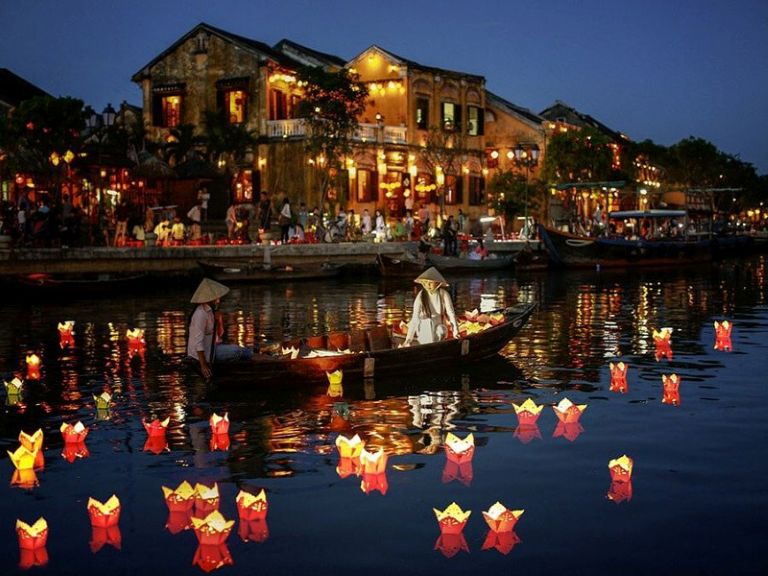
Hoi An Traditional Culture Day
- When: Every 14th day of the lunar month (aligns with Lantern Festival)
- Experience: Cultural performances, traditional games, and special workshops in the Ancient Town.
Mid-Autumn Festival
- When: September or early October (15th day of the 8th lunar month)
- Experience: Children’s activities, mooncakes, lantern parades, and lion dances. Despite occurring during the rainy season, the festivities continue between downpours.
Tet Trung Thu (Children’s Festival)
- When: September/October (varies by lunar calendar)
- Experience: Special focus on children with processions, mask performances, and sweet treats.
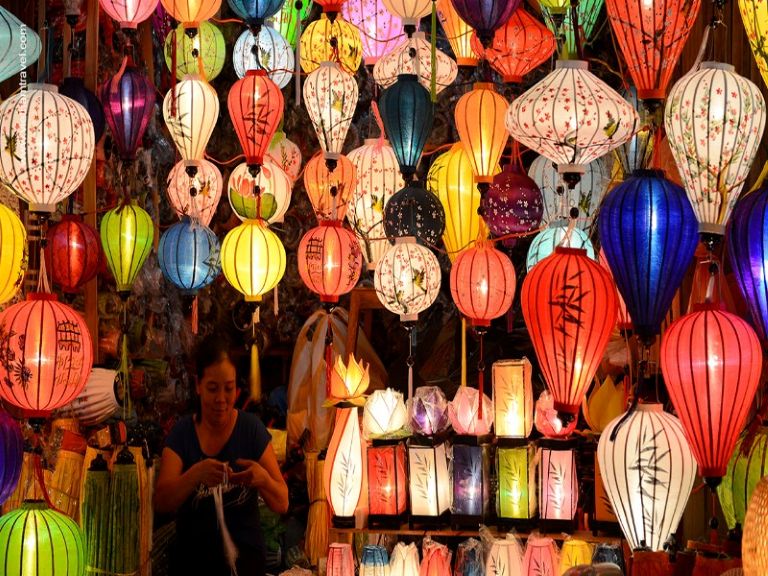
Seasonal Cultural Highlights
Rice Harvesting (March-April and August-September)
- Experience: The surrounding countryside transforms into golden hues as rice reaches maturity. Perfect for photography and rural tours.
Boat Racing Festival
- When: Every fourth year (next in 2027), usually in March
- Experience: Traditional boat races on the Thu Bon River with festive atmosphere.
Tourism Seasons: Crowds & Considerations
Understanding Hoi An’s tourism flow helps you balance cost, crowd levels, and experience quality:
Peak Season (December-April)
- Crowd Level: High, especially during December-January holiday period and Tet
- Accommodation Rates: 30-50% higher than low season
- Booking Requirements: Advance bookings recommended (2-3 months) for preferred accommodations
- Pros: Ideal weather, vibrant atmosphere, full range of activities available
- Cons: Crowded Ancient Town, photography challenged by tourist crowds, higher prices
Shoulder Season (May-August)
- Crowd Level: Moderate, with European summer holiday surge in July-August
- Accommodation Rates: Mid-range, with occasional promotions
- Booking Requirements: 3-4 weeks advised for best options
- Pros: Generally good weather, fewer crowds than peak season, better photography opportunities
- Cons: Increasing heat and humidity, potential for early storms in August
Low Season (September-November)
- Crowd Level: Low (except during specific festivals)
- Accommodation Rates: Discounted by 20-40%
- Booking Requirements: Last-minute bookings often possible
- Pros: Authentic local experience, best hotel values, attentive service
- Cons: Heavy rain and potential flooding, limited beach time, some outdoor activities restricted
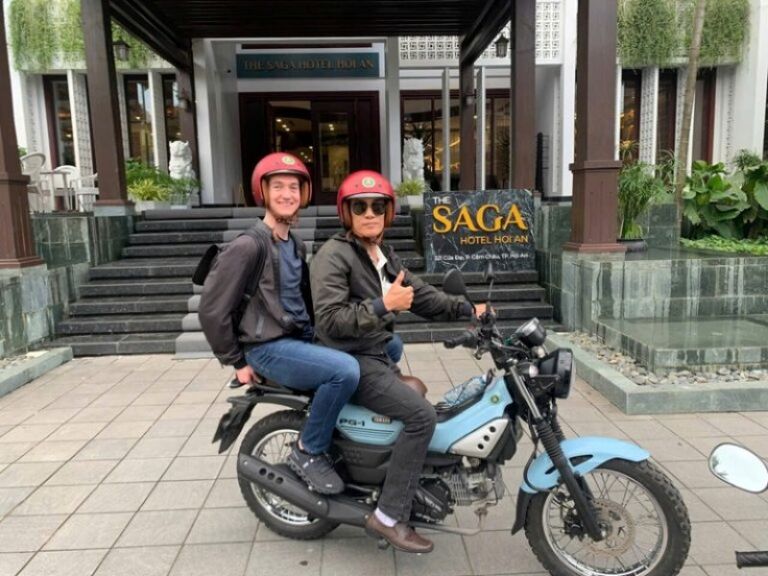
>> See more: How Many Days to Visit Hoi An: The Ultimate Guide for Travelers (2025)
Special Considerations: Floods, Typhoons & Planning Tips
Flood Risk Assessment
Hoi An’s Ancient Town sits in a low-lying area and experiences annual flooding:
- Minor Flooding: Common from September-November, typically manageable with elevated walkways installed by locals
- Major Flooding: Occurs most years in October-November, sometimes closing businesses in the Ancient Town for several days
- Historical Patterns: Most severe flooding tends to occur in mid-to-late October and early November
Typhoon Season Safety
The central Vietnam coast faces typhoon risk primarily from September through November:
- Peak Risk Period: Late September to early November
- Advance Warning: Typically 3-5 days’ notice
- Travel Impact: Flight cancellations and transportation disruptions are possible
- Safety Measures: Hotels have established protocols; follow staff guidance during warnings
Expert Travel Tips by Season
Dry Season Visitors (February-August):
- Book Ancient Town accommodation with swimming pools or easy beach access for midday heat breaks
- Plan outdoor activities and walking tours for early morning (7-10am) or late afternoon (4-7pm)
- Pack light, breathable clothing, sun protection, and reusable water bottles
Wet Season Visitors (September-January):
- Build flexibility into your itinerary to accommodate rain delays
- Consider accommodation in slightly elevated areas if visiting during peak flood season
- Pack quick-dry clothing, waterproof footwear, and compact rain gear
- Add extra days to your planned stay as weather buffers
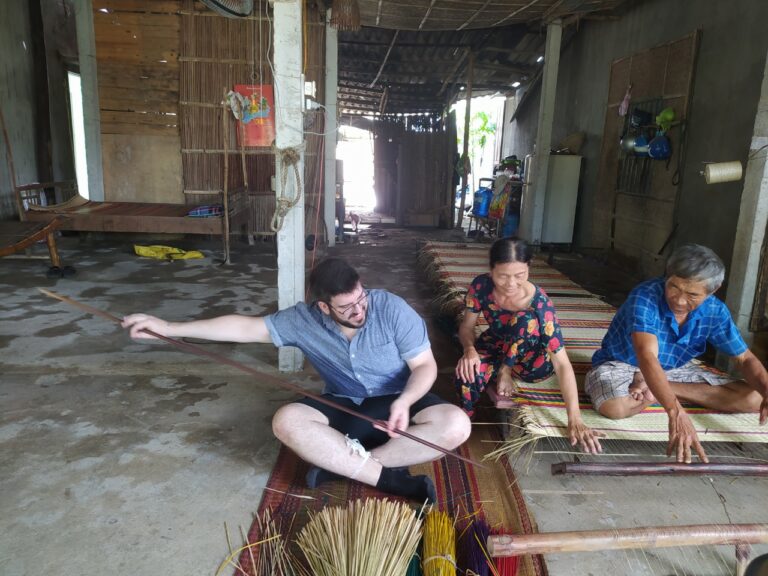
Seasonal Itineraries: Making the Most of Your Visit
Dry Season Itinerary (February-April) – The Perfect Balance
Day 1: Ancient Town Exploration
- Morning: Guided walking tour of Ancient Town highlights
- Afternoon: Shopping in artisan workshops, tailor fitting
- Evening: Sunset boat ride on Thu Bon River, dinner at a riverside restaurant
Day 2: Cultural Immersion
- Morning: Cooking class with market visit
- Afternoon: Bicycle tour through rice fields to Tra Que Vegetable Village
- Evening: Lantern-making workshop, night market exploration
Day 3: Beach & Surroundings
- Morning: Half-day trip to My Son Sanctuary
- Afternoon: Relaxation at An Bang Beach
- Evening: BBQ seafood dinner on the beach
Hot Season Itinerary (May-July) – Beat the Heat
Day 1: Early Explorations
- Early Morning: Ancient Town photography walk (5:30-8:30am)
- Late Morning: Indoor activities (museums, cafe break)
- Late Afternoon: Japanese Bridge and heritage buildings when temperatures cool
- Evening: Food tour through Ancient Town streets
Day 2: Water Day
- Morning: Cham Islands snorkeling trip
- Afternoon: Continue island exploration with seafood lunch
- Evening: Sunset cocktails at Hidden Beach
Day 3: Culture & Cooling
- Early Morning: Countryside bicycle tour
- Midday: Cooking class in air-conditioned facility
- Late Afternoon: Basket boat tour through water coconut palms
- Evening: Rooftop dinner and lantern festival viewing
Wet Season Itinerary (September-November) – Embracing the Rain
Day 1: Ancient Town & Indoor Culture
- Morning: Museum visits and covered walkway exploration
- Afternoon: Tailor fittings and craft demonstrations
- Evening: Traditional performance at theater, covered restaurant dinner
Day 2: Culinary Focus
- Morning: Extended market tour and cooking class
- Afternoon: Cafe hopping and food tastings
- Evening: Premium dining experience at Ancient Town restaurant
Day 3: Weather-Adaptive Day
- Option A (Good Weather): Countryside tour and rice field visit
- Option B (Rainy Weather): Spa treatments, Vietnamese coffee workshop, covered shopping
- Evening: River cruise if weather permits or cocktail making class
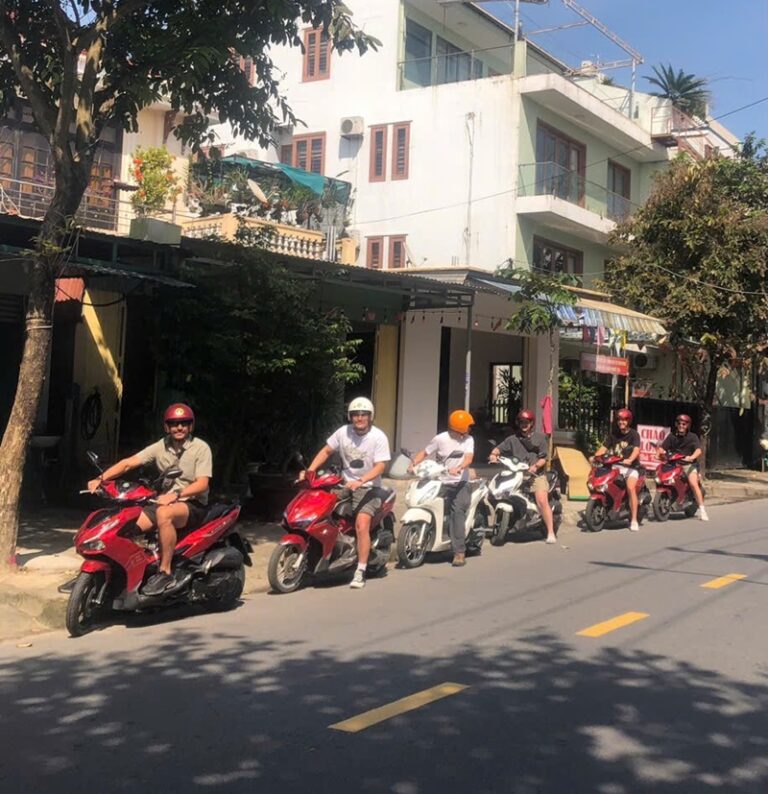
Conclusion: Best Time To Visit Hoi An
After weighing all factors, the best time to visit Hoi An for most travelers falls between February and April when ideal weather conditions combine with moderate crowd levels and vibrant cultural activities. These months offer the perfect balance of sunny days, comfortable temperatures, reasonable prices, and the magical atmosphere that makes Hoi An special.
That said, each season in Hoi An presents its own unique charm:
- For photographers: February and March provide excellent light, fewer tourists, and beautiful blooming surroundings.
- For budget travelers: September and early October offer the best value despite rain risks.
- For cultural enthusiasts: Align your visit with the lunar calendar to experience the monthly Lantern Festival during good weather months.
- For heat-sensitive travelers: December through February offers the coolest temperatures.
Whatever season you choose, Hoi An’s ancient charm, culinary delights, and cultural richness ensure a memorable experience—as long as you come prepared for the specific conditions of your selected timeframe.
Explore Hoi An Your Way with Hoi An Scooter Rental
Discover the freedom to experience Hoi An and its surrounding countryside on your own schedule with Hoi An Scooter Rental. Whether you’re visiting during the perfect dry months or navigating the atmospheric rainy season, having your own transportation transforms your experience of this ancient region.
Our fleet of meticulously maintained scooters comes with comprehensive insurance and 24/7 roadside assistance, giving you peace of mind in any season. During the wet months, we provide complimentary rain ponchos and waterproof bags to keep you comfortable. In the dry season, take advantage of our curated route maps to explore hidden beaches and scenic countryside roads.
As a locally-owned business staffed by English-speaking guides, we offer more than just vehicles—we provide insider knowledge about current road conditions, seasonal attractions, and authentic local experiences often missed by guidebooks. Plus, a portion of every rental supports local flood resilience projects in vulnerable communities.
Book your scooter online before arrival to secure availability during peak seasons and receive our exclusive “Hidden Hoi An” digital guide—featuring season-specific recommendations from local experts.
